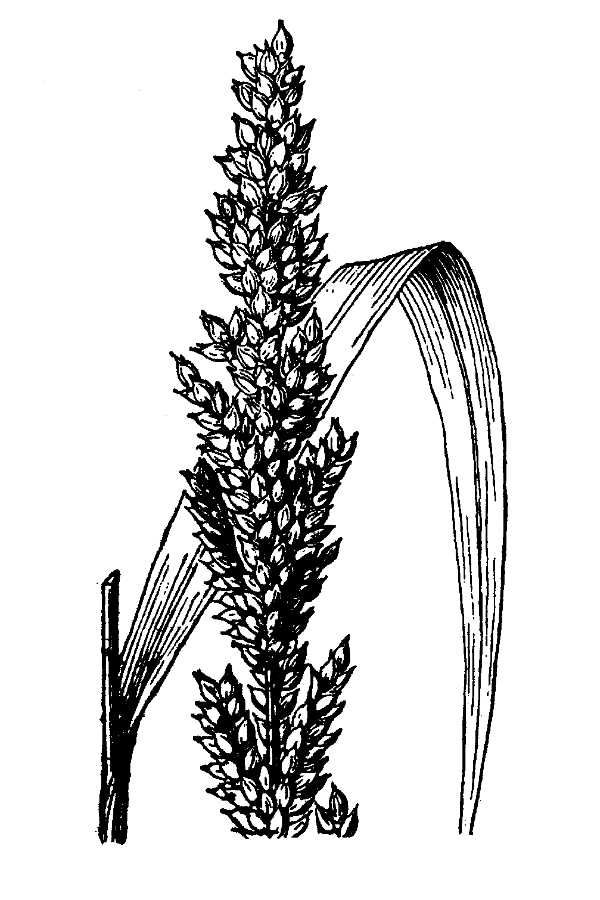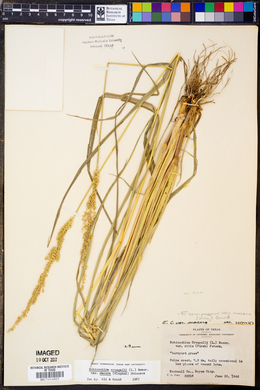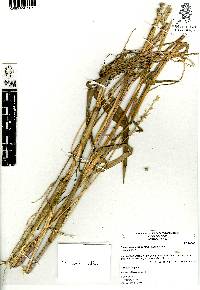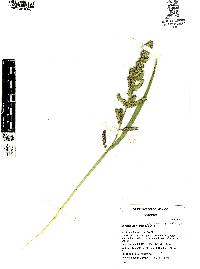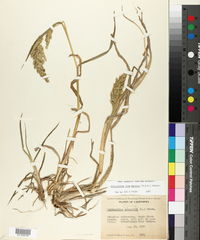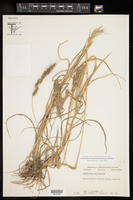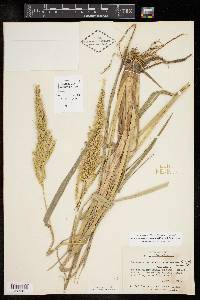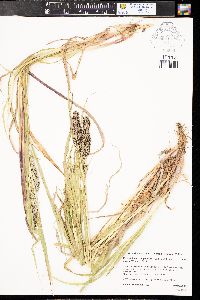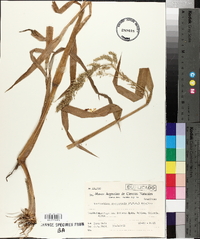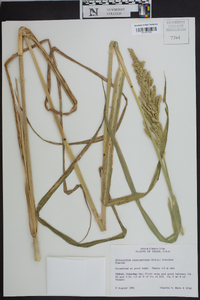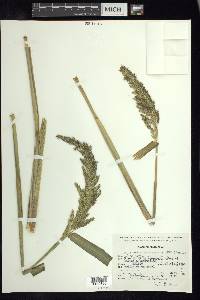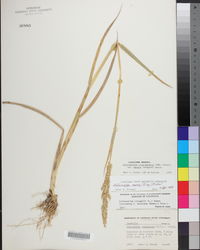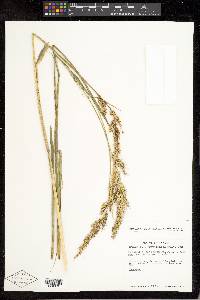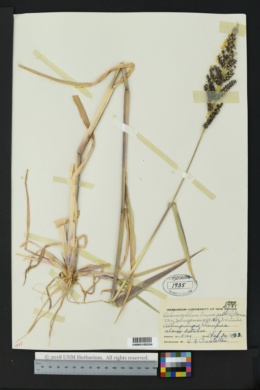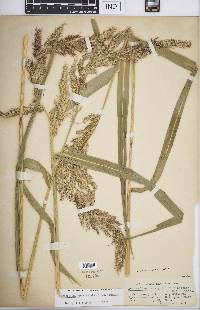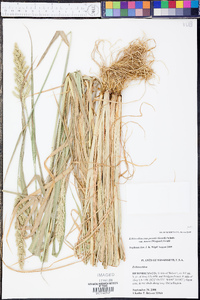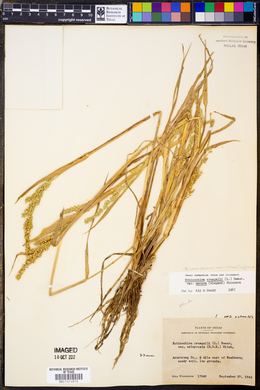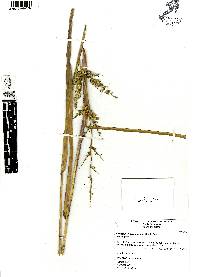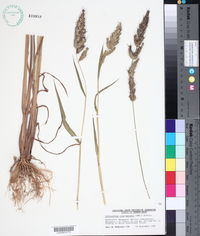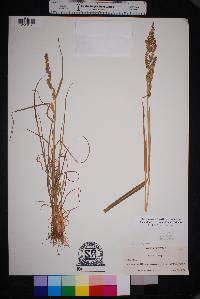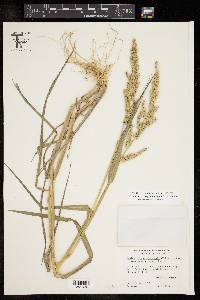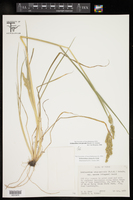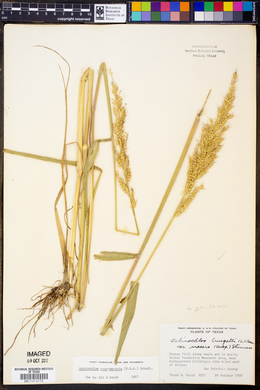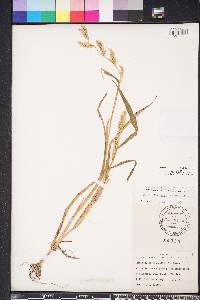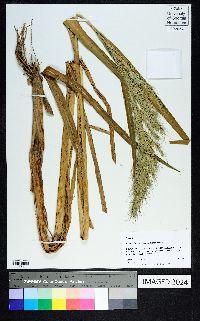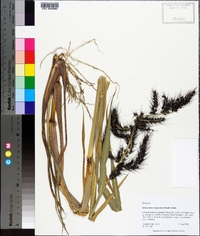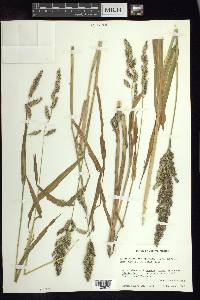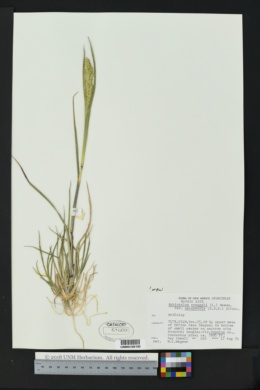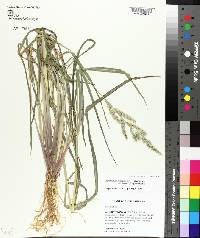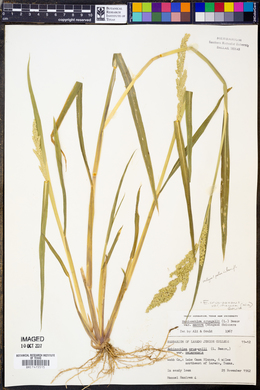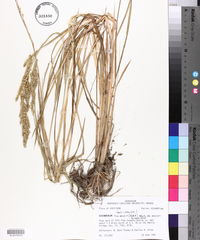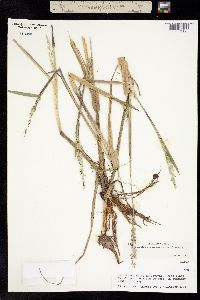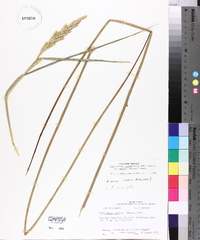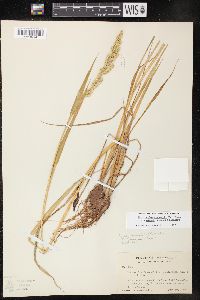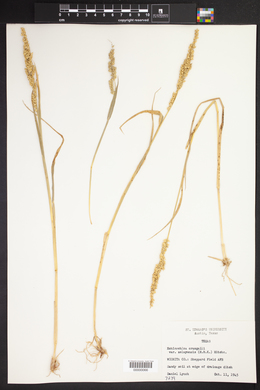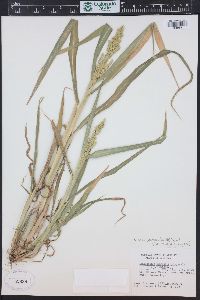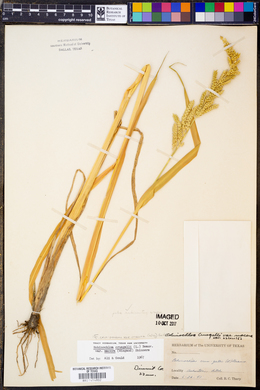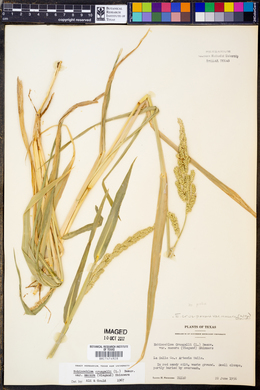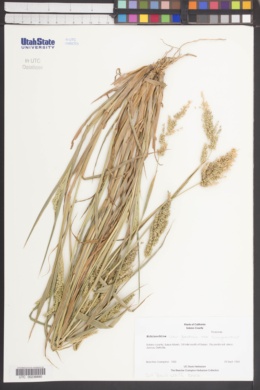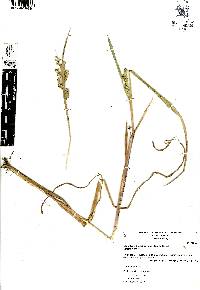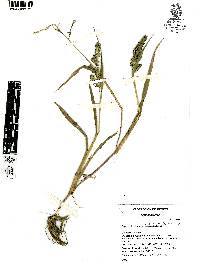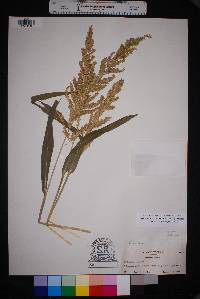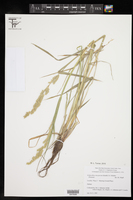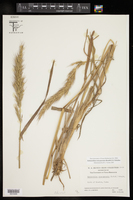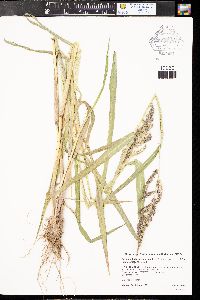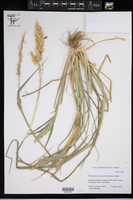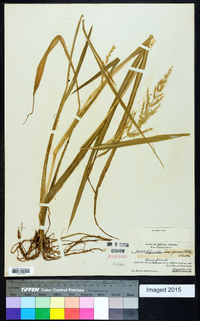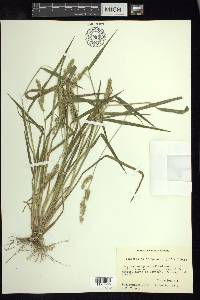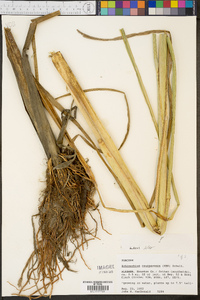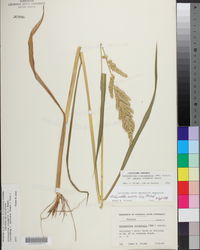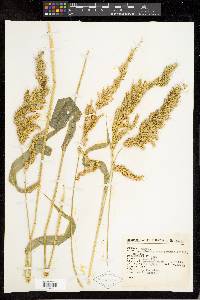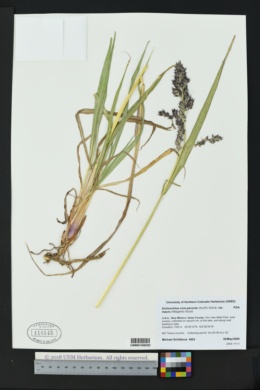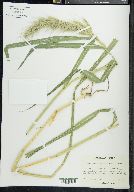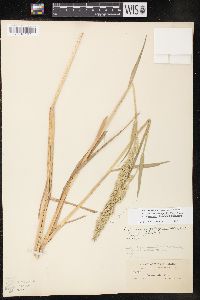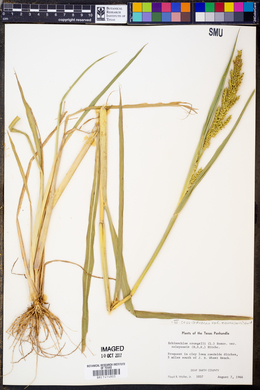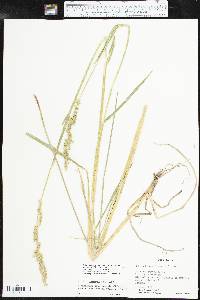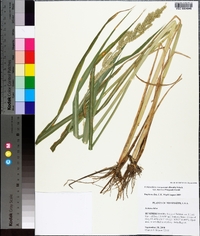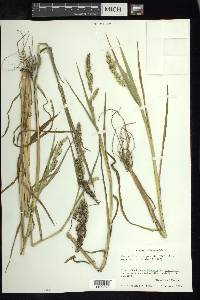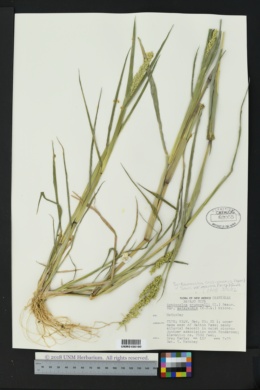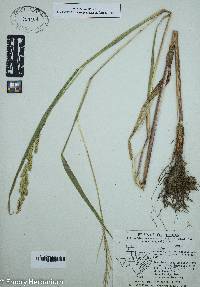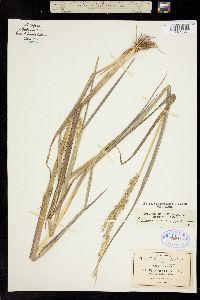Echinochloa crus-pavonis
|
|
|
|
Family: Poaceae
Gulf Cock's-Spur Grass, more...gulf cockspur grass, Gulf Barnyard Grass
[Echinochloa crus-pavonis var. rostrata Stapf, moreEchinochloa cruspavonis (Kunth) Schult., Echinochloa rostrata (Stapf) P.W. Michael, Panicum colonum var. bussei Peter, Panicum crus-pavonis (Kunth) Nees, Panicum subulicola Nees] |
Plants annual or short-lived perennials. Culms 30-150 cm; nodes glabrous. Sheaths glabrous, often purplish; ligules absent; blades 12-60 cm long, 10-25 mm wide, glabrous. Panicles 10-30 cm, erect or drooping, nodes sparsely hispid, hairs papillose-based, internodes glabrous; primary branches to 14 cm, nodes sometimes sparsely hispid, hairs papillose-based, internodes usually glabrous; secondary branches to 3 cm. Spikelets 2.5-3.4 mm long, 1.2-1.4 mm wide, disarticulating at maturity. Upper glumes subequal to the spikelets; lower florets sterile; lower lemmas unawned or awned, awns 3-10(15) mm, curved; lower paleas absent, vestigial, or well-developed; upper lemmas narrowly elliptic, not or scarcely exceeding the upper glumes, acute or obtuse, with a well-differentiated, early-withering tip, glabrous or pubescent at the base of the tip, hairs not forming a line across the base; anthers 0.5-0.7 mm. Caryopses 1.2-1.5 mm long, 1-1.3 mm wide; embryos 50-70% as long as the caryopses. 2n = 36. Echinochloa crus-pavonis is a native species found in scattered locations from British Columbia to Arizona, east to Florida, and south into South America. It favors marshes and wet places at lower elevations, often being found in the water. FNA 2003, Chase 1971 Common Name: gulf cockspur grass Duration: Annual Nativity: Native Lifeform: Graminoid General: Annual or short-lived perennial grass, erect or sometimes decumbent at base, 30-150 cm tall; nodes glabrous. Vegetative: Sheaths glabrous, often purplish; ligules absent; blades 12-60 cm long, 10-25 mm wide, glabrous. Inflorescence: Panicles 10-30 cm, erect or often nodding, rather soft, pinkish or pale purple; primary branches to 14 cm, mostly ascending or appressed, secondary branches to 3 cm. Spikelets 3 mm long, 1 mm wide, disarticulating below the glumes at maturity. Glumes subequal to the spikelets; lower florets sterile; lower (sterile) lemmas unawned or with awns up to 1 cm; lower paleas sometimes present; upper (fertile) lemmas coriaceous, narrowly elliptic, with a well-differentiated, early-withering tip, glabrous or pubescent at the base of the tip; caryopses 1.5 mm long. Ecology: Found in marshes and wet places, often found growing in water; below 7,000 ft. Distribution: Scattered locations from British Columbia to AZ, east to FL, and south into S. America. Notes: Echinochloa are similar to Panicum and Setaria due to the hard single-seeded spikelets; however, the one-sided racemes, lack of ligules, large, pointed spikelets and lack of subtending bristles separates this genus. Echinochloa crus-pavonis is a native species, though incredibly difficult to distinguish from the exotic and much more common Echinochloa crus-galli (barnyard grass). Both species have well-differentiated, early-withering tips on the fertile lemmas; according to FNA, E. crus-galli has a line of hairs at the base of that lemma tip, while E. crus-pavonis can be glabrous or pubescent at that location, but there is never a line of hairs. There are two varieties of E. crus-pavonis; ours is var. macera, found in the US and northern Mexico, with panicles that are usually erect and lower paleas that are reduced or absent. The species as a whole has a good amount of taxonomic uncertainty surrounding it, having been considered a variety of E. crus-galli, and also now encompassing more than one variety of that species. Treatments state that the spikelets have 1 cm awns, but herbarium specimens do not always bear that out. Ethnobotany: Ceremonial emetic for Ramah Navajo. Probably also used as a food plant by various tribes, as it is so similar to E. crus-galli. Etymology: Echinochloa is from Greek echinos for hedgehog and chloe or chloa for grass, referring to the bristly spikelets; crus-pavonis is from Latin crus, the leg or thigh and pavo, a peacock. Synonyms: Echinochloa zelayensis, Echinochloa crus-galli var. zelayensis; others, see Tropicos Editor: AHazelton 2015 |

